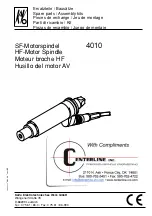
8
General Information
2.2 General Sensor Information
The Luminescent Dissolved Oxygen (LDO) Sensor (
Figure 1
) allows aqueous samples to
be easily and accurately analyzed for dissolved oxygen concentration. Specially designed
for municipal and industrial wastewater applications, the system consists of a controller
with an integrated display, and a sensor (probe with sensor cap) for in-situ measurement.
The LDO sensor can be operated using the sc100 controller and the sc1000 controller.
Refer to
Operation on page 15
and
sc1000 Operation on page 25
for more information.
Optional equipment, such as mounting hardware for the sensor, is supplied with an
instruction sheet for all user installation tasks. Several mounting options are available,
allowing the sensor to be adapted for use in many different applications.
Typical applications include aeration basins, nutrient removal in equalization basins,
aerobic and anaerobic digesters, effluent streams, rivers, lakes, and fish ponds.
Figure 1
LDO Sensor Dimensions
2.3 Theory of Operation
The sensor in the cap is coated with a luminescent material. Blue light from an LED
illuminates the luminescent chemical on the surface of the sensor cap. The luminescent
chemical instantly becomes excited and then as the excited chemical relaxes, it releases
red light. The red light is detected by a photodiode and the time it takes for the chemical to
return to a relaxed state is measured. The higher the oxygen concentration, the less red
light is given off by the sensor and the shorter time it takes for the luminescent material to
return to a relaxed state. The oxygen concentration is inversely proportional to the time it
takes for the luminescent material to return to a relaxed state.
Unlike electrochemical dissolved oxygen sensor technologies, the Luminescent Dissolved
Oxygen (LDO) sensor does not consume oxygen. It does not require frequent
recalibration or frequent cleaning (except when associated with consumptive slimes),
resulting in longer sensor life and more stable and accurate readings. The system is also
flow-independent so measurements can be made in applications with low or no flow.
Summary of Contents for LDO
Page 2: ...Visit http www hach com...
Page 6: ...Visit us at www hach com...
Page 28: ...Visit us at www hach com...
Page 32: ...Visit us at www hach com...
Page 36: ...Visit us at www hach com...
Page 40: ...Visit us at www hach com...
Page 42: ...Visit us at www hach com...









































